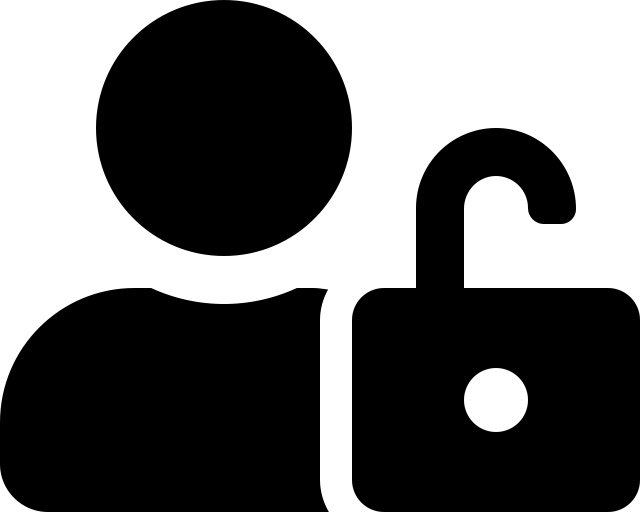Managing Users
If you use an Anypoint account to login to RPA Manager, refer to the Anypoint Access Management documentation.
| If you are your organization’s first admin user, you are responsible for creating all other users. You can do this yourself or create another user with admin privileges to whom you delegate this task. |
Manage the users of RPA Manager, RPA Recorder, and RPA Builder:
-
Create and delete users.
-
Edit the users' personal data.
-
Assign privileges or roles to users that enable them to work in specific modules and, access RPA Builder and RPA Recorder, and assume responsibility for process projects.
-
Assign a user to a process team.
Before You Begin
-
The tenant admin is created first and can create other users.
-
If you are not a tenant admin, ask an administrator to assign you the required privileges:
Action Required Privileges Open the User Management module.
User Management Open
Create, edit, license, and delete users.
User Management Administration
Create a User
Create a user to give an employee access to RPA Manager, RPA Recorder, and RPA Builder. After creation RPA Manager sends an email with a one-time password to the new user. The new user needs to log in to RPA Manager and set a new password within the expiration time mentioned in the email.
-
Open the Users view of the User Management module.
-
Click Create.
-
Complete the form Create a New User:
-
Login Name:
Name for the user to log on to RPA Manager. After creation, the login name can no longer be changed.
-
Time Zone:
Time zone the user works in. All times not marked otherwise are shown in the time zone of the user.
-
Available/Assigned Roles/Privileges:
Click on a role or privilege to assign it to or remove it from the user.
-
-
Click Save.
Assign Privileges to a User
A user needs privileges to view and use the RPA Manager modules. This ensures that only authorized users can access the modules. Assign privileges to a user when you create a new user or edit an existing user.
-
Open the Users view of the User Management module.
-
Click either Create in the header bar to create a new user or Edit (
 ) in the panel of the user to edit.
) in the panel of the user to edit. -
In the form <[Create,Edit]> a [New] User, scroll down to the selection list Available Privileges.
-
Click a privilege to assign it to the user.
-
Repeat the previous step until the user has all needed privileges.
-
Click Save.
Change Process Assignments of a User
Instead of editing a project and adding a user to its project team, you can change several project assignments of a user at once:
-
Open the Users view of the User Management module.
-
Click Assign Project (
 ) in the panel of the user whose project assignments you want to change.
) in the panel of the user whose project assignments you want to change.
The view Assign Process shows you a list of all processes where the user is part of the process team.
To change permissions for assigned projects to reflect changed user responsibilities:
-
In the view Assign Process, for each process, select the checkboxes to permit the phases to the user.
-
Click Save.
You cannot change permissions for the project manager, who always has permissions for every phase.
The table does not show advanced permissions, which are sometimes needed to transfer a process to the next phase. To change these permissions, edit the process data sheet in the Process Management view of the Process Automation module.
To assign additional processes to a user to support the process team:
-
In the view Assign Process, select a process from the dropdown Select Process.
-
In the table Process List, in the row of the added process, select the checkboxes of all phases the user needs to work in.
-
Click Save.
To remove a user from a process team:
-
In the view Assign process, click Delete (
 ) for each process to remove from the user.
) for each process to remove from the user. -
Click Save.
The project manager and the project owner cannot be deleted. To change them, use the function New Process Owner or New Project Manager in the Process Management view of the Process Automation module.
Reset a User Password
Reset a password if the user forgot it. RPA Manager sends an email that contains a new temporary password to the user. The user can then create a new password.
-
Open the Users view of the User Management module.
-
Click Reset Password (
 ) in the panel of the user to edit.
) in the panel of the user to edit.
Change Your Password
Change your own password regularly. You are logged out in the process and have to log in again. The password is used to log in to RPA Manager and RPA Builder.
-
Click on your user name in the navigation side bar.
-
Click Profile in the drop-down menu.
-
In the Profile view, click Change password.
-
Enter your old and new password.
-
Click OK.
-
Log in with your new password.
Reset Your Password
If you forget your password or if your one-time password expires, click the link on RPA Manager login page to reset it. You need to know your user name to reset your password.
-
Navigate to the RPA Manager login screen.
-
Click Forgot your credentials?.
-
In the Forgot your credentials form, enter your username.
-
Click Continue.
A confirmation request for creating a new password is emailed to you.
-
Open the email in your email application.
-
Click Request New Credentials.
A link to create a new password is emailed to you. The one-time password expires after 24 hours.
-
Open the email in your email application.
-
Copy or remember the one-time password.
-
Click Sign In.
-
In the RPA Manager login screen, enter your user name and the one-time password.
If you use two-factor authentication, append the time-based one-time password (TOTP) to your one-time password (OTP) on login.
For example, if your OTP is
Nz2tuQbtxpse?and your TOTP password is123456, enterNz2tuQbtxpse?123456in the password field. -
Click Sign In.
-
In the Welcome to RPA Manager form, enter a new password.
-
Confirm and remember the password.
-
Click Reset Password.
Enable Two-Factor Authentication for Yourself
Enable two-factor authentication (2FA) for extra security.
When using two-factor authentication, you log in to the system with two mutually independent secret factors.
The TOTP (Time-Based One-Time Password Algorithm) is set up in a special app on a mobile device. Every thirty seconds, a new password is generated and this can be used for authentication within this time period.
Both the computer on which RPA Manager is installed, and the mobile device on which the app for generation of the one-time password is installed, must be able to determine the precise Unix time for verification of the user. For this reason, the time on the devices used should be synchronized with UTC (Universal Time Coordinated).
-
Click on your user name in the navigation side bar.
-
Click Profile in the drop-down menu.
-
In the Profile view, click Enable Two-Factor Authentication.
-
Follow the instructions in the window Enable Two-Factor Authentication.
-
Click Enable Two-Factor Authentication.
Log in using your password and 2FA.
|
Append the time-based one-time password (TOTP) directly to your password on login. For example, if your password is |
Disable Two-Factor Authentication for Yourself
Two-factor authentication can also be deactivated for you by an administrator.
To disable two-factor authentication for yourself:
-
Click on your user name in the navigation side bar.
-
Click Profile in the drop-down menu.
-
In the Profile view, click Disable Two-Factor Authentication.
Log in using only your password.
You can enable 2FA again.
Deactivate Two-Factor Authentication for a User
To disable two-factor authentication for a user:
-
Open the Users view of the User Management module.
-
Click Deactivate Two-Factor Authentication (
 ) in the panel of the user whose 2FA want to deactivate.
) in the panel of the user whose 2FA want to deactivate. -
Confirm the deactivation.
The user can enable 2FA again.
Edit a User
Edit users to change their data or permissions:
-
Open the Users view of the User Management module.
-
Click Edit (
 ) in the panel of the user to edit.
) in the panel of the user to edit. -
Edit the form Edit a User.
For an explanation of the properties, see Create a new User.
-
Click Save.
Remove a User
Remove obsolete users. A user cannot be deleted if it is the owner or manager of a process. Deleted users cannot be restored. Use the Deactivate function to remove a user only temporarily.
-
Open the Users view of the User Management module.
-
Click Delete (
 ) in the panel of the user to edit.
) in the panel of the user to edit. -
Confirm the removal.



